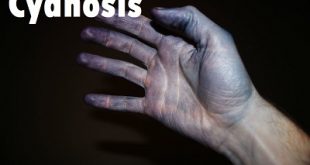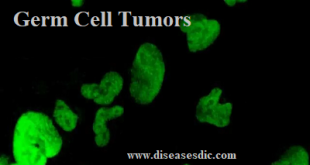What is Trigeminal Neuralgia?
Trigeminal neuralgia is sudden, severe facial pain. It’s often described as a sharp shooting pain or like having an electric shock in the jaw, teeth or gums. It usually happens in short, unpredictable attacks that can last from a few seconds to about 2 minutes. The attacks stop as suddenly as they start.
In most cases, trigeminal neuralgia affects just one side of the face, with the pain usually felt in the lower part of the face. Very occasionally the pain can affect both sides of the face, although not usually at the same time. People with the condition may experience attacks of pain regularly for days, weeks or months at a time. In severe cases attacks may happen hundreds of times a day.
It’s possible for the pain to improve or even disappear altogether for several months or years at a time (remission), although these periods tend to get shorter with time. Some people may then develop a more continuous aching, throbbing or burning sensation, sometimes accompanied by the sharp attacks. Living with trigeminal neuralgia can be very difficult. It can have a significant impact on a person’s quality of life, resulting in problems such as weight loss, isolation and depression.
What are the two main types of trigeminal neuralgia?
There are two main forms of trigeminal neuralgia:
- Typical (Type 1) trigeminal neuralgia. You’ll likely experience painful episodes that are sharp, intense and sporadic. You may feel pain and/or a burning sensation all over your face that can last anywhere from a few seconds to two minutes. Though there will be pain-free breaks in between episodes, this can continue for up to two hours.
- Atypical (Type 2) trigeminal neuralgia. This will be less painful and intense but more widespread. You’ll likely feel constant pain, notably stabbing and/or burning sensations, along with persistent aches and pains. With atypical trigeminal neuralgia, you may have more difficulty controlling the symptoms.
Pathophysiology
Because the exact pathophysiology remains controversial, the etiology of trigeminal neuralgia (TN) may be central, peripheral, or both. The trigeminal nerve (cranial nerve V) can cause pain, because its major function is sensory. Usually, no structural lesion is present (85%), although many investigators agree that vascular compression, typically venous or arterial loops at the trigeminal nerve entry into the pons, is critical to the pathogenesis of the idiopathic variety. This compression results in focal trigeminal nerve demyelination. The etiology is labeled idiopathic by default and is then categorized as classic trigeminal neuralgia.
Neuropathic pain is the cardinal sign of injury to the small unmyelinated and thinly myelinated primary afferent fibers that subserve nociception. The pain mechanisms themselves are altered. Microanatomic small and large fiber damage in the nerve, essentially demyelination, commonly observed at its root entry zone (REZ), leads to ephaptic transmission, in which action potentials jump from one fiber to another. A lack of inhibitory inputs from large myelinated nerve fibers plays a role. Additionally, a reentry mechanism causes an amplification of sensory inputs. A clinical correlate, for instance, is the potential for vibration to trigger an attack. However, features also suggest an additional central mechanism (eg, delay between stimulation and pain, refractory period).
Trigeminal Neuralgia Triggers
Any number of things may cause trigeminal neuralgia pain, such as:
- Gently touching your face
- Shaving
- Washing your face
- Brushing your teeth
- Applying makeup
- Blowing your nose
- Eating or drinking, especially hot or cold foods or drinks
- Talking
- Smiling
- Having wind or a breeze blow at you
Trigeminal Neuralgia Causes and Risk Factors
This starts with irritation of the trigeminal nerve. You might have a blood vessel pressing on the nerve, damaging the protective coating around it, which is called the myelin sheath.
Certain diseases, such as multiple sclerosis, also can injure the myelin sheath. Sometimes a tumor or a tangle of arteries presses on the nerve.
Your trigeminal nerve can also be injured — perhaps by surgery, an accident, or a stroke.
- Some people are more likely to get trigeminal neuralgia than others:
- Women are more likely than men to get trigeminal neuralgia.
- The disease is more common in people older than 50.
- The disorder may run in families, perhaps because of how blood vessels are formed in the brain.
- It may also be linked to high blood pressure.
Although the pain can be intense, the condition is not life-threatening. It can be a progressive disease, though, meaning that it gets worse over time.
Symptoms
One or more of the following symptoms may occur:
- Intermittent twinges of mild pain lasting from a few seconds to several minutes
- Severe episodes of searing, shooting, jabbing pain that feel like electric shocks
- Sudden attacks of pain triggered by stimuli that are usually not painful, such as by touching the face, chewing, speaking, or brushing the teeth
- Spasms of pain which last from a couple of seconds to a couple of minutes
- Episodes of cluster attacks, which may last much longer, but between them, there may be no pain
- Pain wherever the trigeminal nerve and its branches may reach, including the forehead, eyes, lips, gums, teeth, jaw, and cheek
- Pain in one side of the face, or, less frequently, both sides
- Pain that is focused in one spot or spreads in a wider pattern
- Attacks of pain that occur more regularly and intensely over time
- Tingling or numbness in the face before pain develops
Attacks of pain may occur hundreds of times each day in severe cases. Some patients may have no symptoms for months or years between attacks.
Some patients will have specific points on their face that trigger pain when if touched.
What are Complications of Trigeminal Neuralgia?
The main complication of trigeminal neuralgia is side effects and toxicity from long-term use of anticonvulsants. In addition, some anticonvulsants lose effectiveness over time and another anticonvulsant may be needed, which increases the risk for drug-related adverse reactions.
There may be complications from surgical procedures used to treat trigeminal neuralgia, such as:
- loss of sensation of a portion of the face or mouth
- jaw weakness
- eye numbness
- corneal ulceration
- reactivation of a herpes simplex infection
- lack of relief from the procedure
- short-term relief (1-2 years) from the procedure, requiring a second operation
- damage to the nerve which results in a permanent numbness of the face accompanied by pain (anesthesia dolorosa)
Diagnosis
Your doctor will diagnose trigeminal neuralgia mainly based on your description of the pain, including:
- Type. Pain related to trigeminal neuralgia is sudden, shock-like and brief.
- Location. The parts of your face that are affected by pain will tell your doctor if the trigeminal nerve is involved.
- Triggers. Trigeminal neuralgia-related pain usually is brought on by light stimulation of your cheeks, such as from eating, talking or even encountering a cool breeze.
Your doctor may conduct many tests to diagnose trigeminal neuralgia and determine underlying causes for your condition, including:
- A neurological examination. Touching and examining parts of your face can help your doctor determine exactly where the pain is occurring and — if you appear to have trigeminal neuralgia — which branches of the trigeminal nerve may be affected. Reflex tests also can help your doctor determine if your symptoms are caused by a compressed nerve or another condition.
- Magnetic resonance imaging (MRI). Your doctor may order an MRI scan of your head to determine if multiple sclerosis or a tumor is causing trigeminal neuralgia. In some cases, your doctor may inject a dye into a blood vessel to view the arteries and veins and highlight blood flow (magnetic resonance angiogram).
Your facial pain may be caused by many different conditions, so an accurate diagnosis is important. Your doctor may order additional tests to rule out other conditions.
Treating Trigeminal Neuralgia
Medication
Medication can provide relief from pain and reduce the number of attacks. The first form of treatment is typically anti-seizure medications, which are drugs that block nerve firing. Some other second line or adjunctive medications include muscle relaxants and tricyclic antidepressants.
Surgery
While most cases of TN respond to medication, sometimes pain will stop responding to medication and severe symptoms can return. In those cases, surgery may be an option. Common surgical procedures used to treat TN include:
Glycerol Injections
During this procedure, you will be heavily sedated and receive local anesthesia. Your doctor will insert a needle through your cheek and into the base of your skull. The needle is guided by X-ray to a small sac of spinal fluid that surrounds the root of the trigeminal nerve. Once the needle is in place, a small amount of sterile glycerol is released. The glycerol may block the nerve’s ability to transmit signals related to pain or it may enable the insulation of the damaged nerve to heal. It should not damage the nerve. The procedure typically takes only a few minutes to complete and you can go home the same day.
Stereotactic Radiosurgery
This procedure uses computer imaging to deliver highly focused beams of radiation to the root of the nerve. This procedure is painless and is usually performed without anesthesia.
Radiofrequency Thermal Lesioning
This outpatient procedure is performed under general anesthesia and uses a long, hollow needle to guide an electrical current to the trigeminal nerve. You will be awake during the procedure to assist your doctor in identifying the exact location of the origin of the pain. Once the site of the pain is identified, the electrode is heated and it destroys the nerve.
Gamma-Knife Radiosurgery
This is an outpatient procedure that uses a targeted approach for delivery of radiation that destroys the trigeminal nerve. It’s growing in popularity because of its precision, effectiveness, and the fact that it’s considered safer than other surgical treatments and is the least invasive option.
Microvascular Decompression
This is a major medical procedure that involves brain surgery. The procedure works by relieving pressure from the affected nerves and allowing them to heal. Studies have shown 90 percent of patients report pain relief.
Other Options
Other surgical options include severing the nerve or relocating blood vessels that may be putting pressure on the nerve. All surgeries carry the risk of temporary to permanent numbness in the face. In some cases, pain may eventually return.
Your doctor can provide information on the benefits and risks associated with any form of treatment. Upon evaluating your symptoms, medical history, and personal preference, your doctor will help you decide which treatment option is best for you.
Prevention of Trigeminal Neuralgia
There is no known way to prevent trigeminal neuralgia. However, you may learn to avoid activities that trigger pain.
For example, some people take the following steps to prevent or reduce attacks:
- Wash your face with warm water – not too hot, not too cold
- Eat soft foods
- Eat foods that are room temperature, warm or cool – not too hot or cold
- Avoid foods that may trigger attacks, such as caffeine and citrus fruits
- After eating, rinse your mouth with room-temperature water
- Brush your teeth gently with a soft brush
- If wind triggers pain, wear a scarf wrapped gently around your face in windy weather
- Avoid other triggers that you know have caused pain in the past
 Diseases Treatments Dictionary This is complete solution to read all diseases treatments Which covers Prevention, Causes, Symptoms, Medical Terms, Drugs, Prescription, Natural Remedies with cures and Treatments. Most of the common diseases were listed in names, split with categories.
Diseases Treatments Dictionary This is complete solution to read all diseases treatments Which covers Prevention, Causes, Symptoms, Medical Terms, Drugs, Prescription, Natural Remedies with cures and Treatments. Most of the common diseases were listed in names, split with categories.








Pls. what are drugs that can prevent the shocking sensations and the dosage.
For Trigeminal Neuralgia, medications commonly prescribed include anticonvulsants like Carbamazepine, muscle relaxants such as Baclofen, and antidepressants like Amitriptyline. Dosages and specific medications should be determined by a healthcare professional based on individual factors. Surgical interventions may be considered in cases where medications are ineffective, and it’s crucial to consult with a neurologist or pain specialist for personalized treatment guidance.